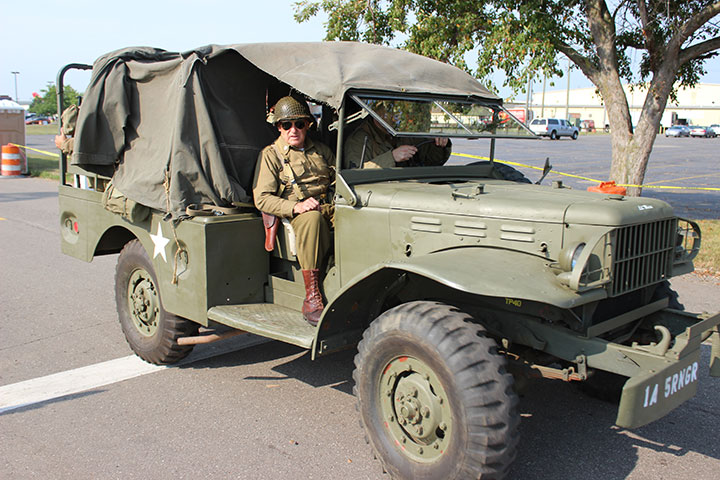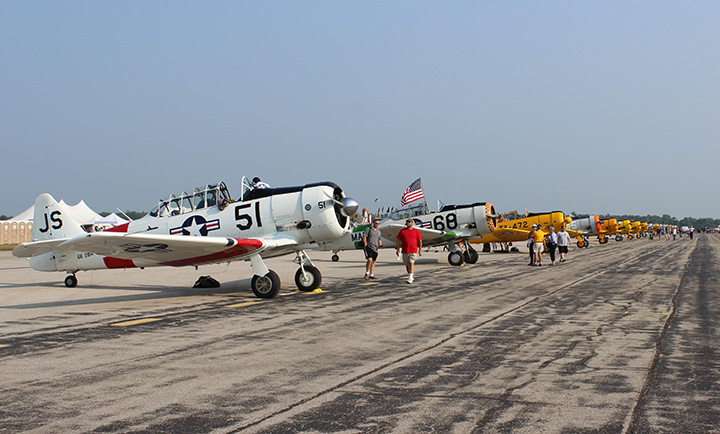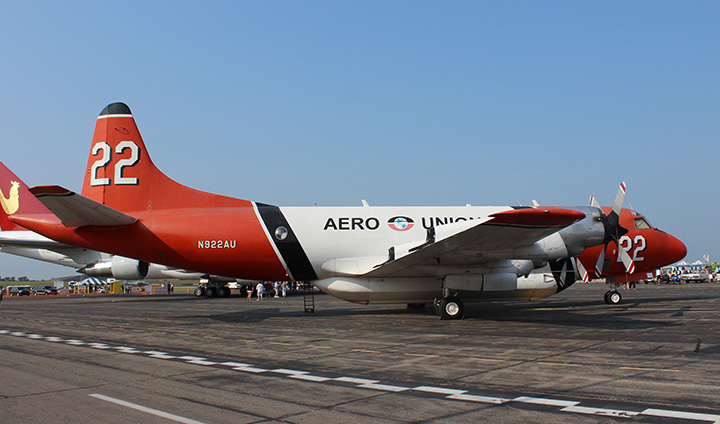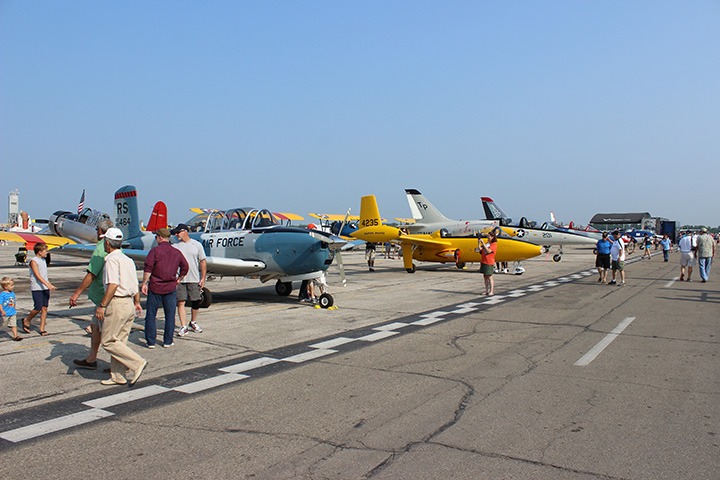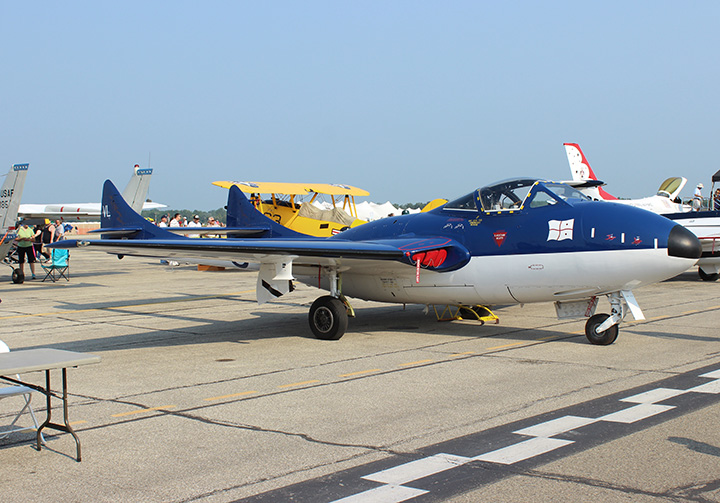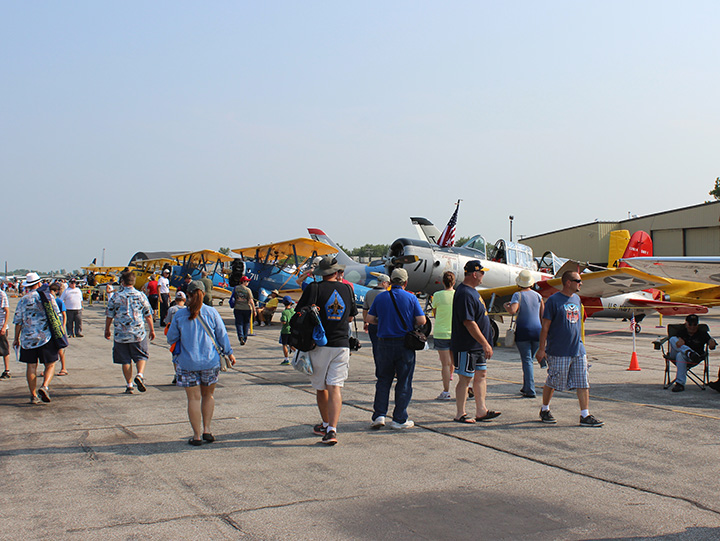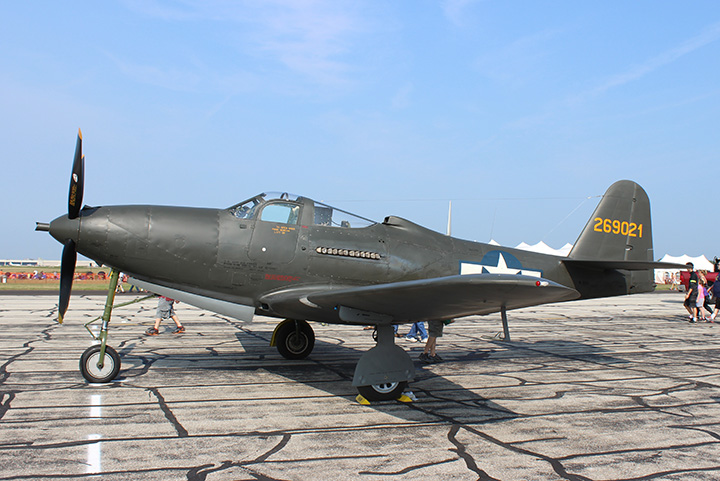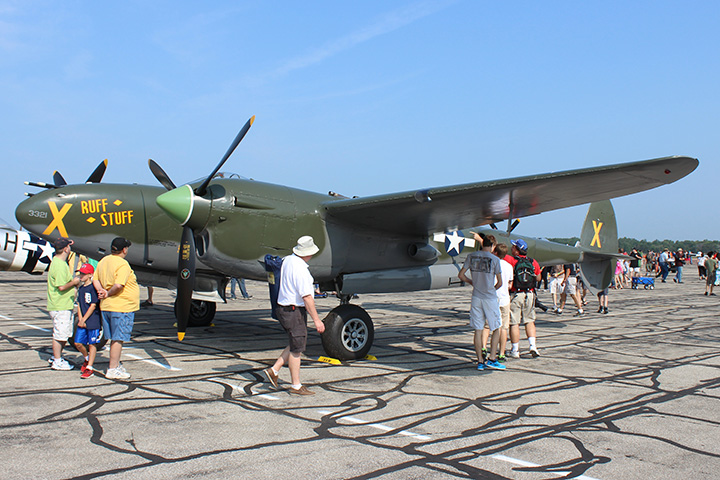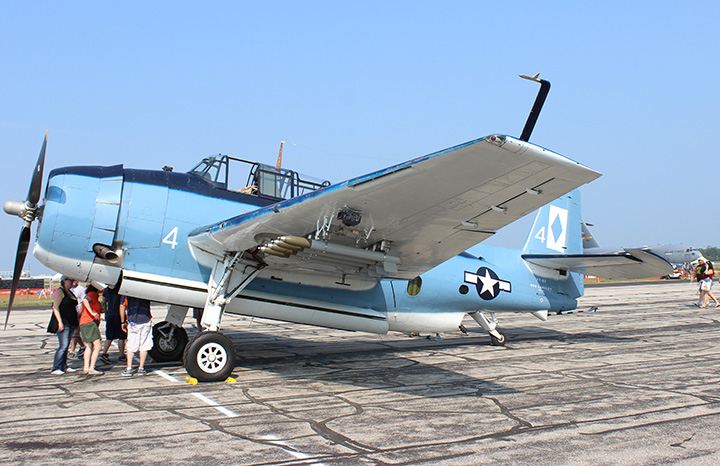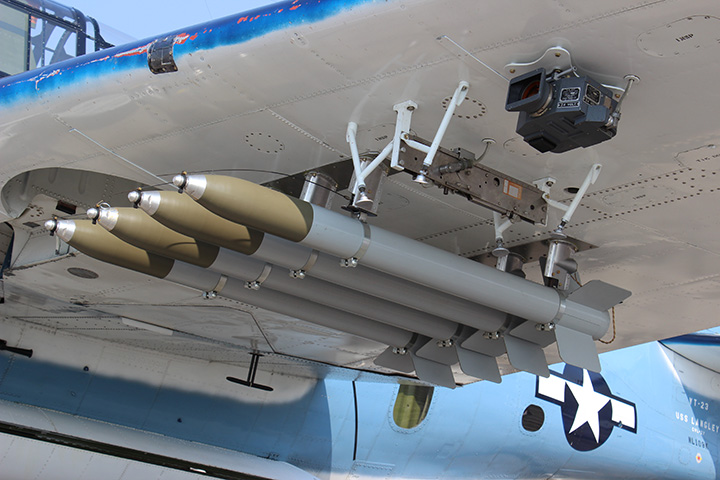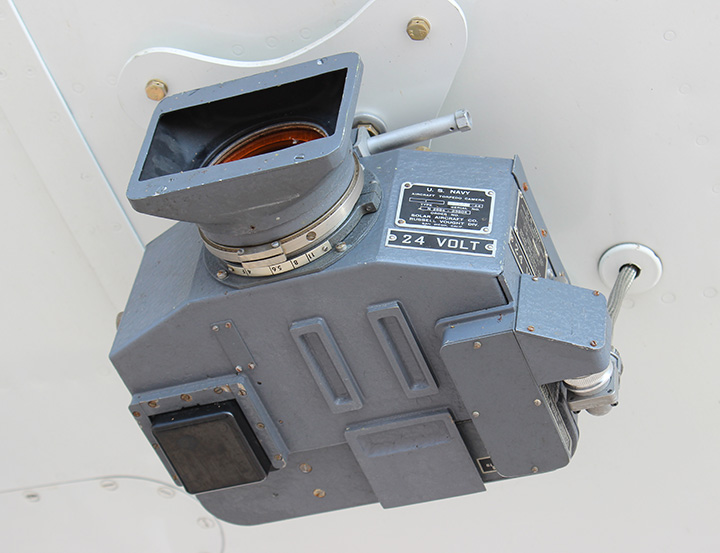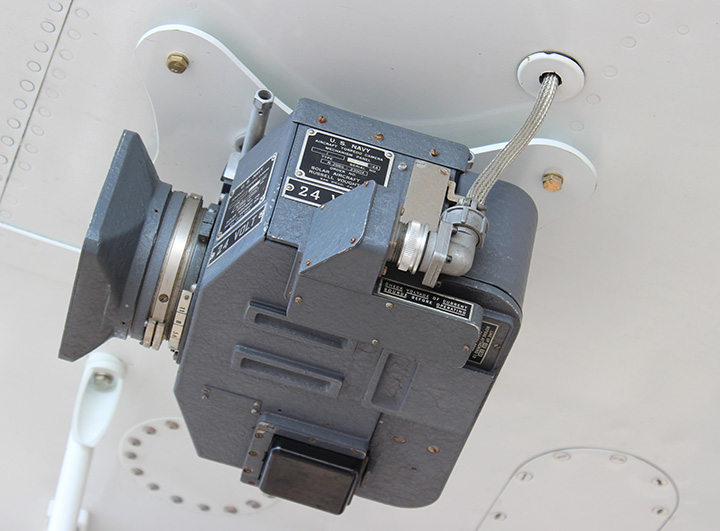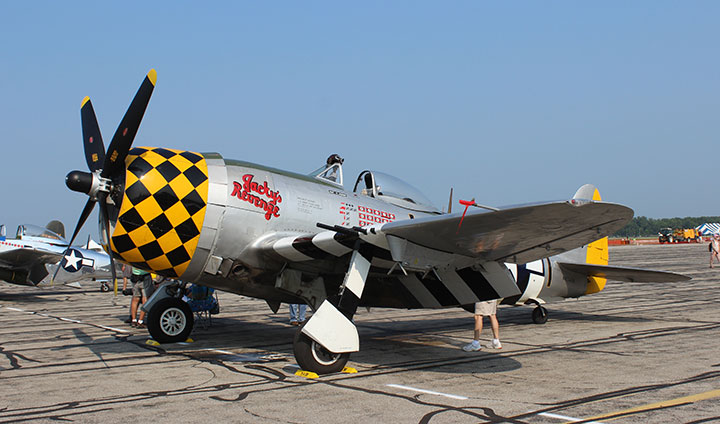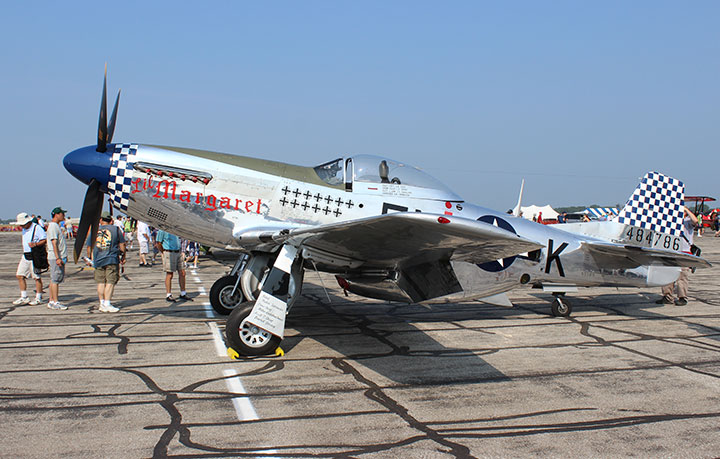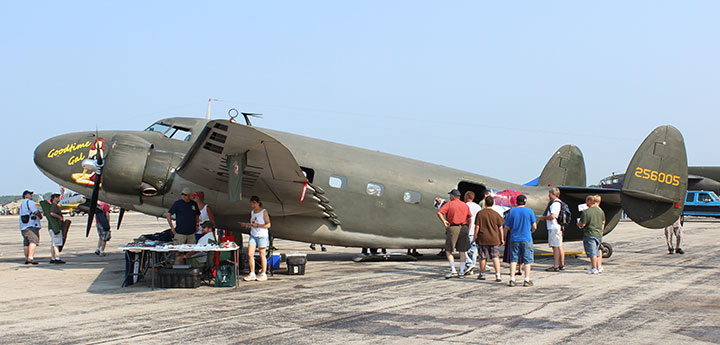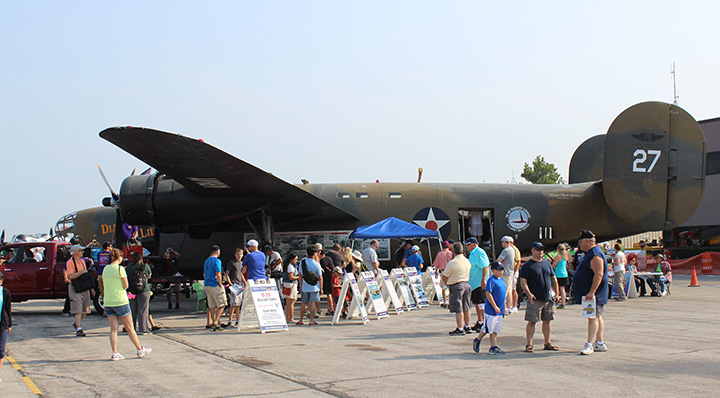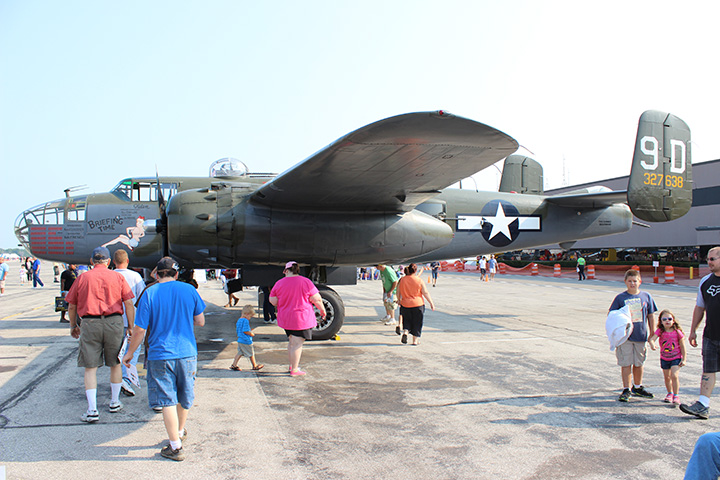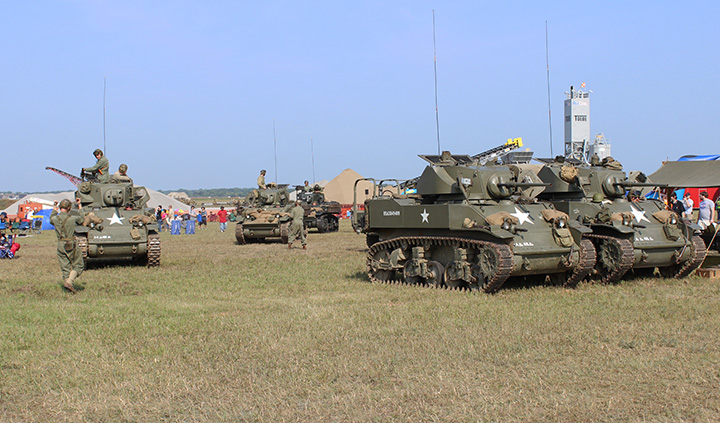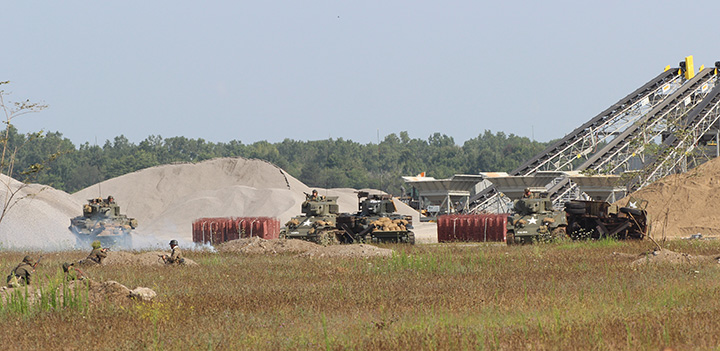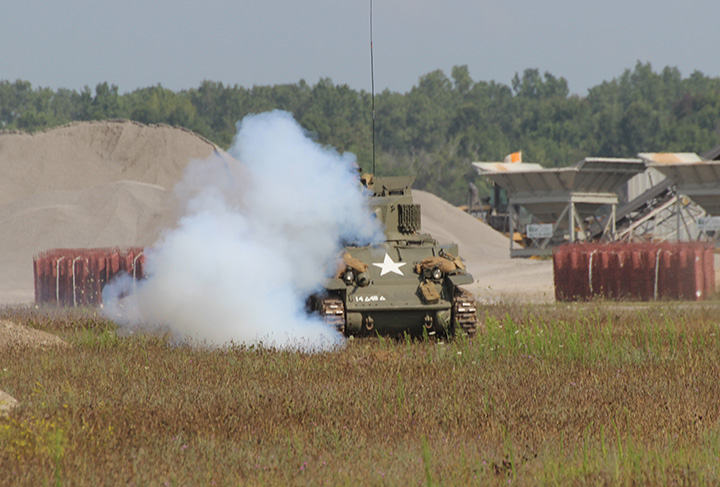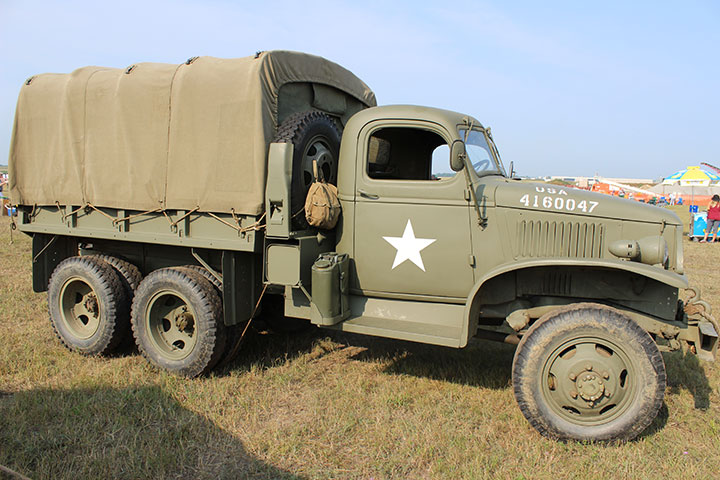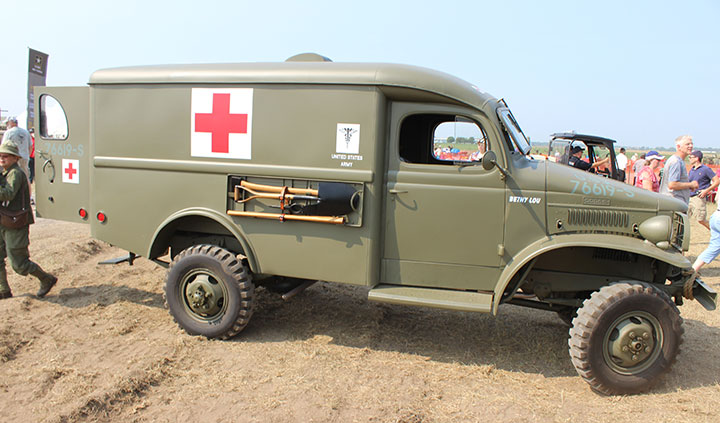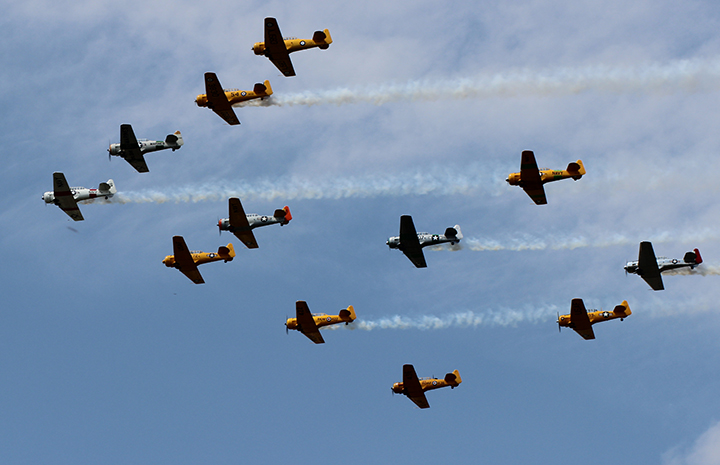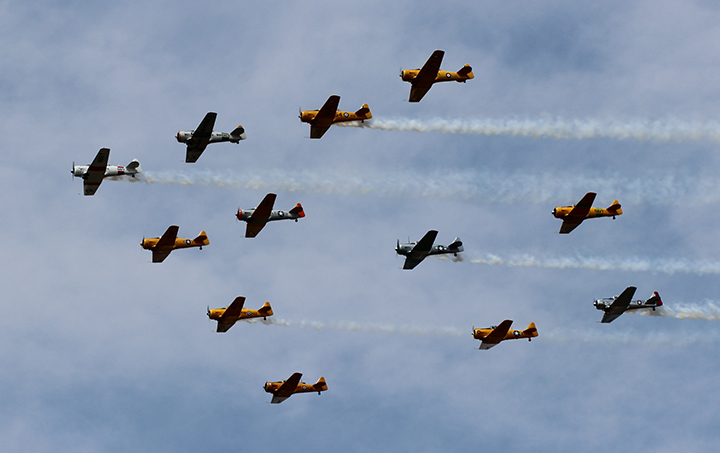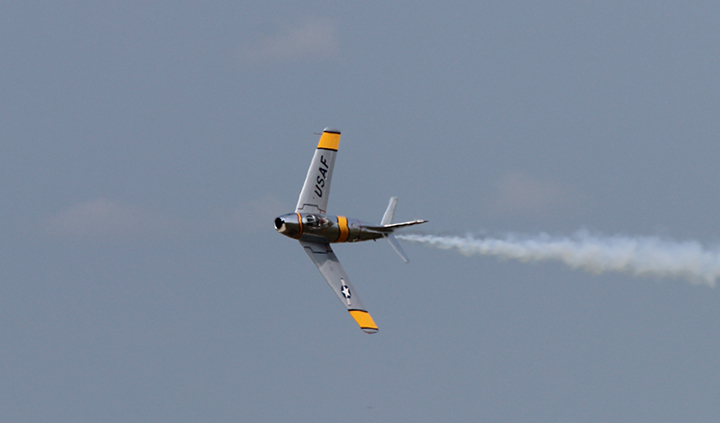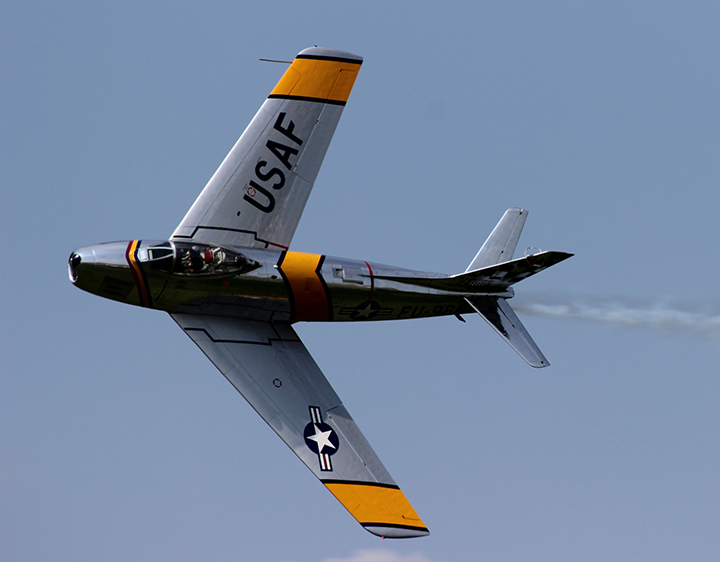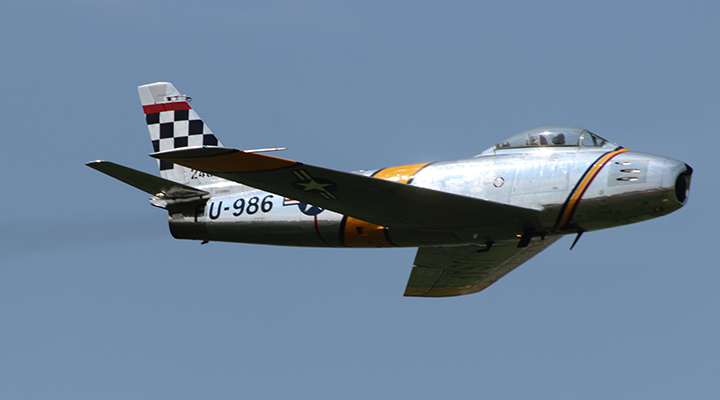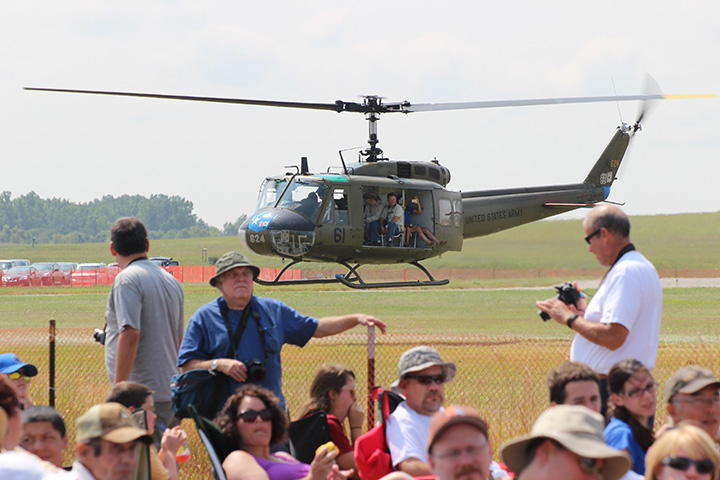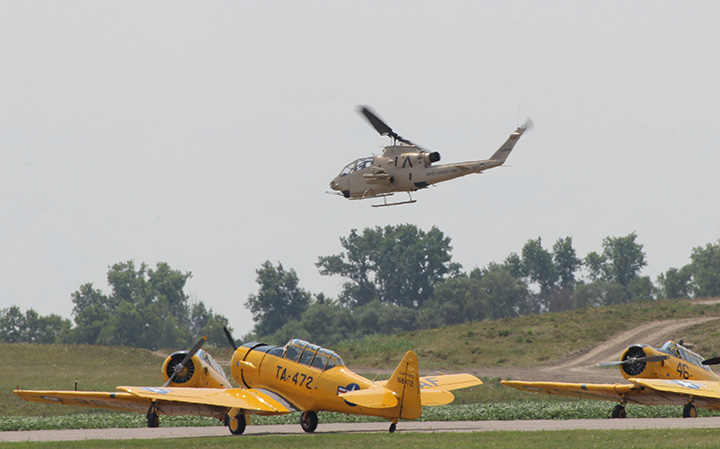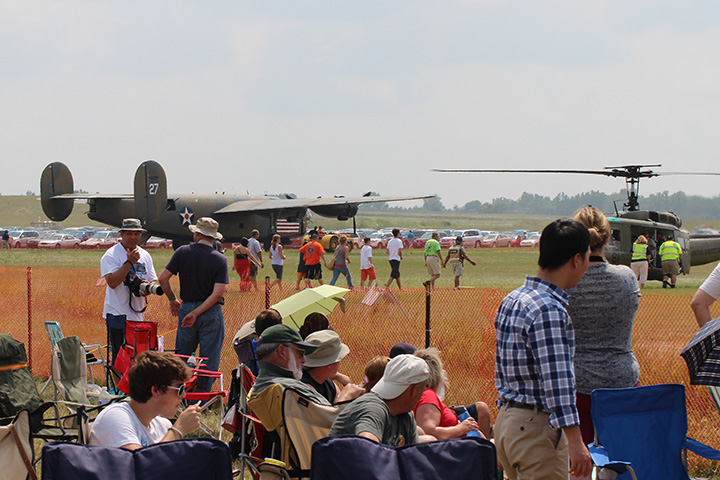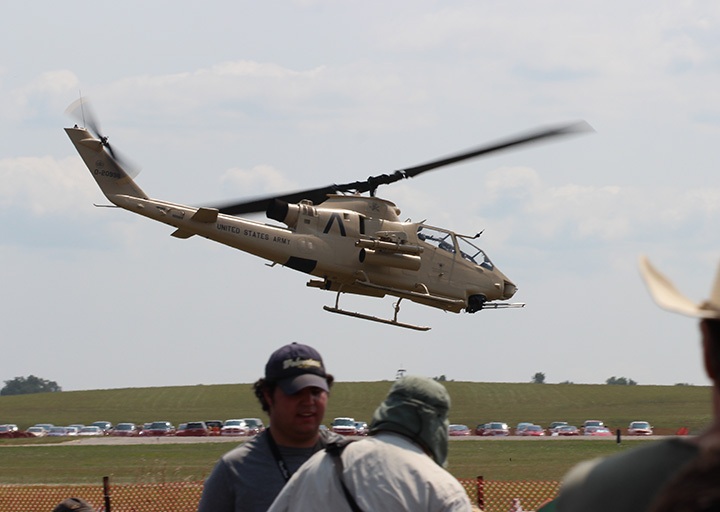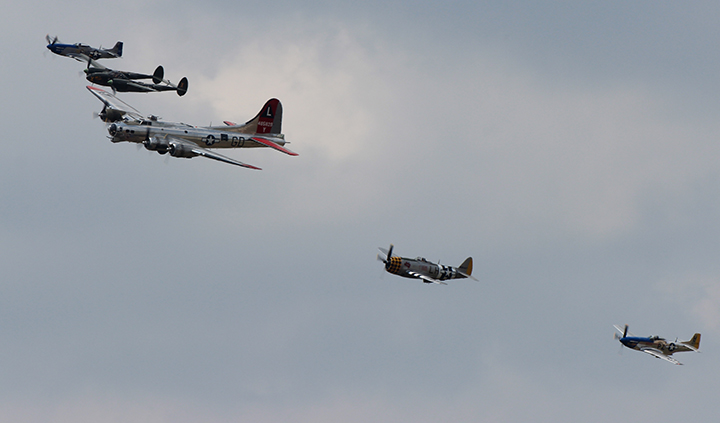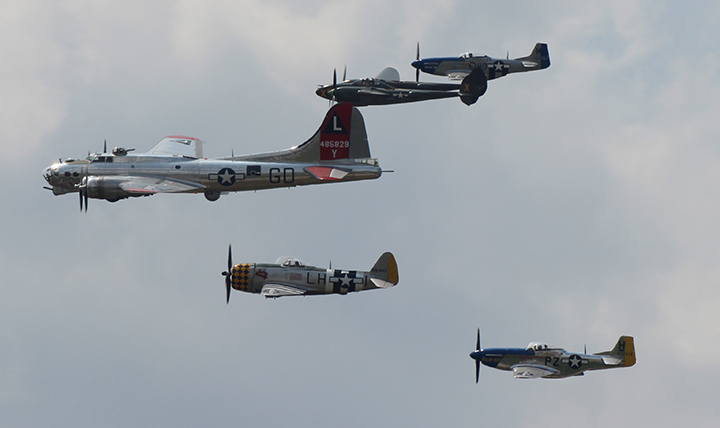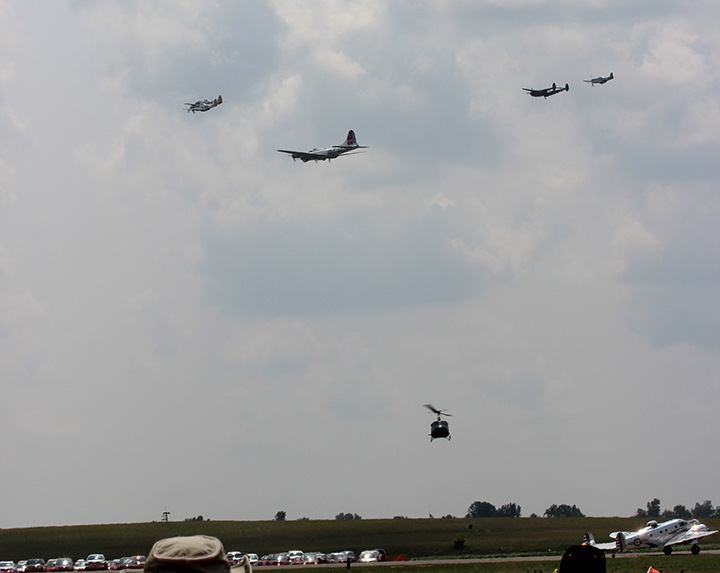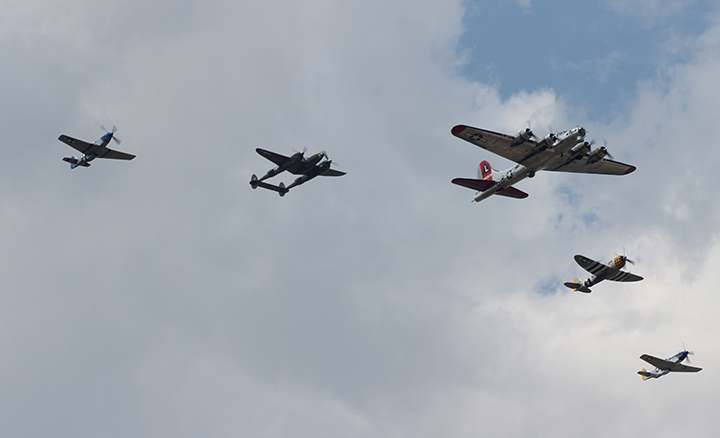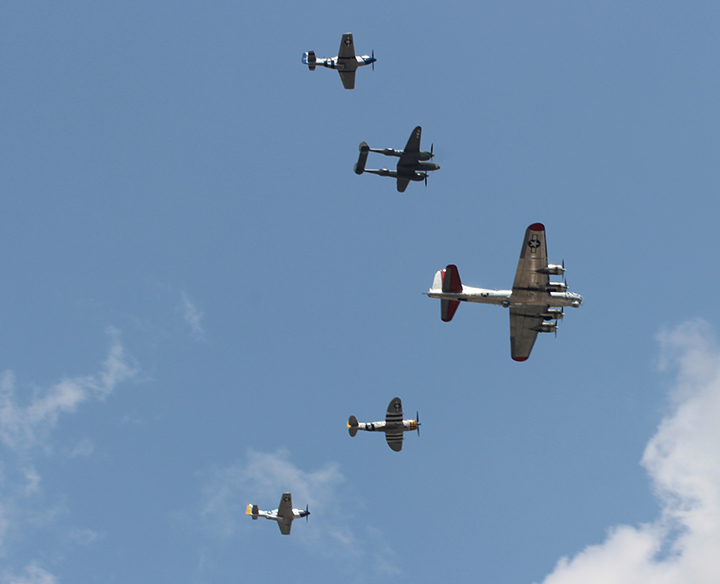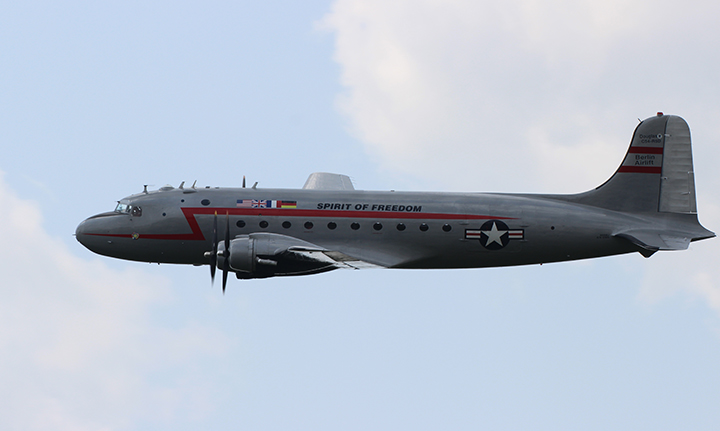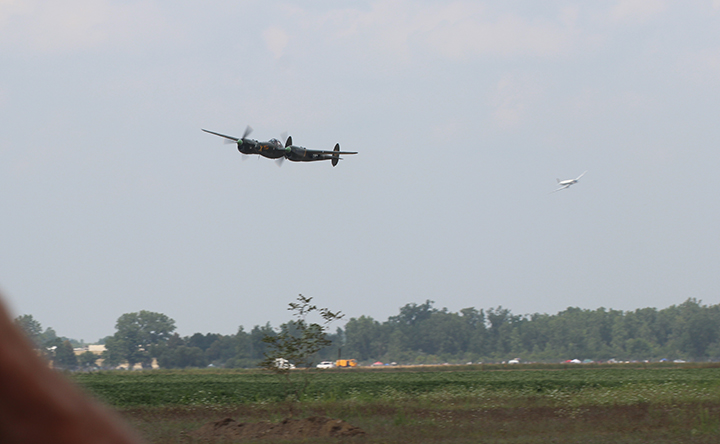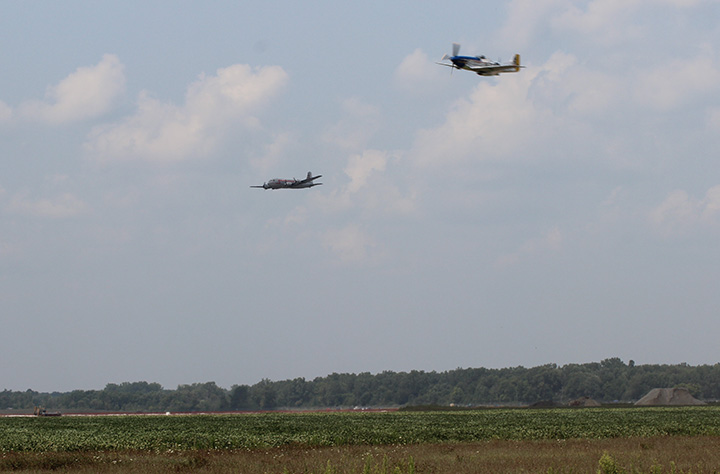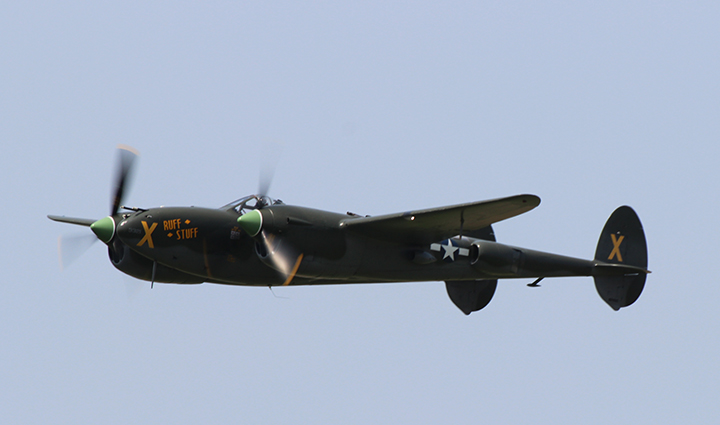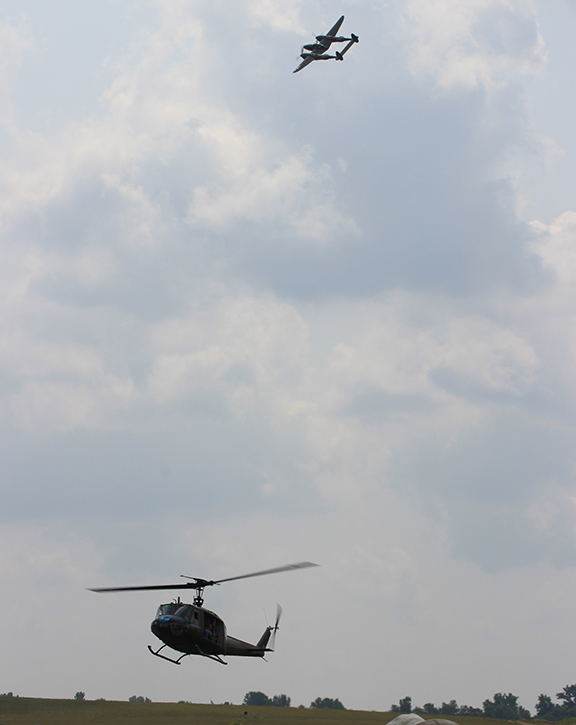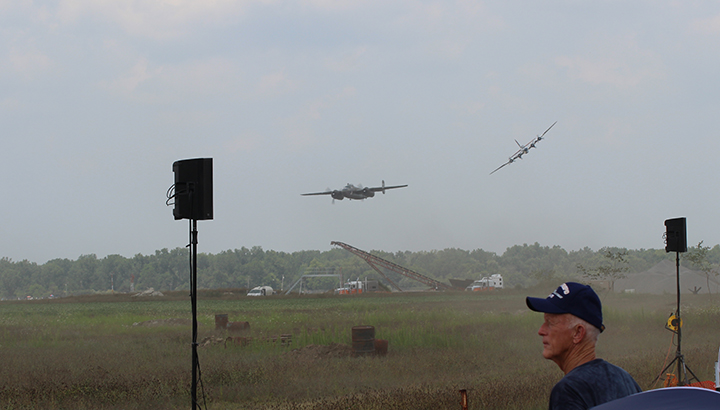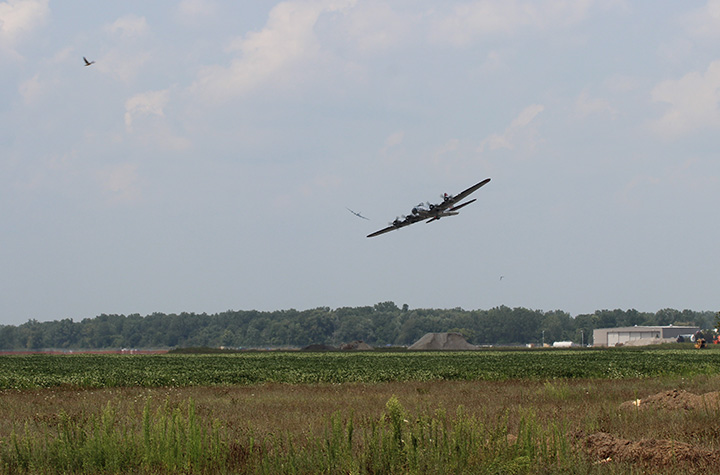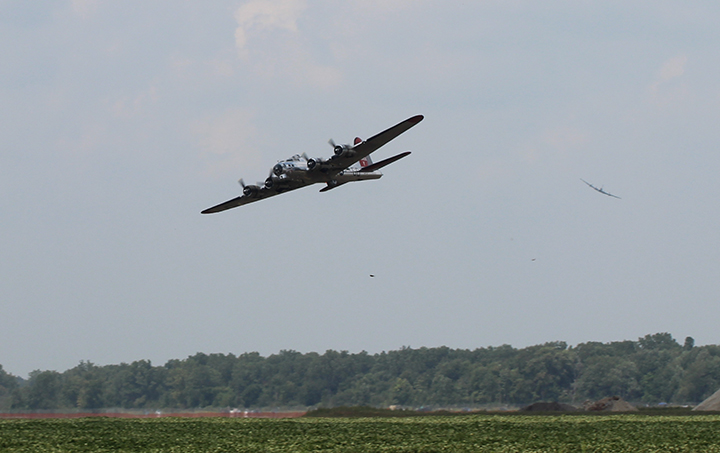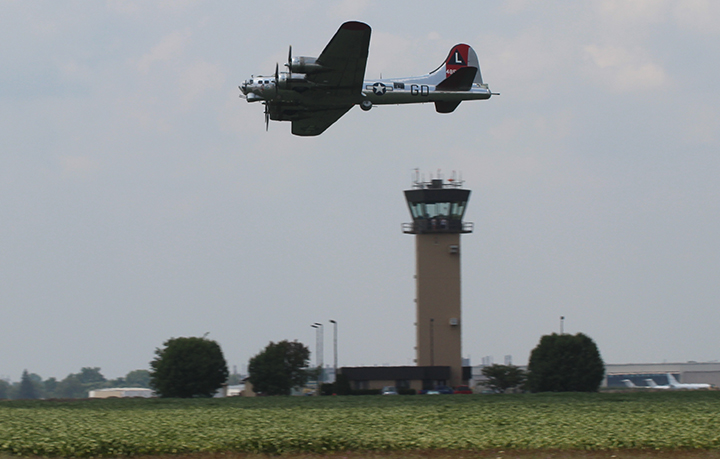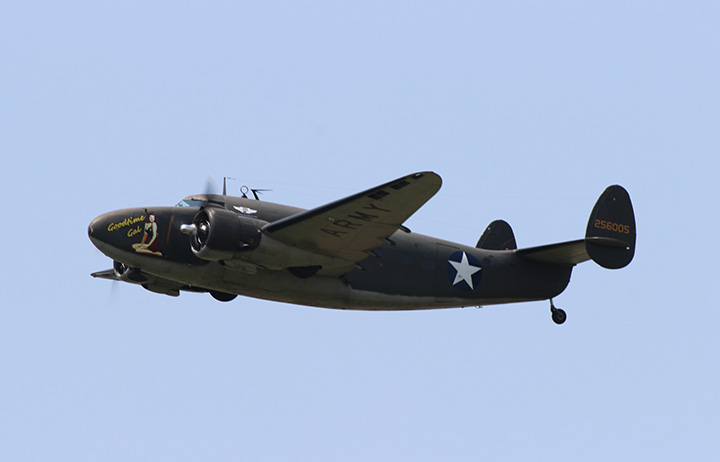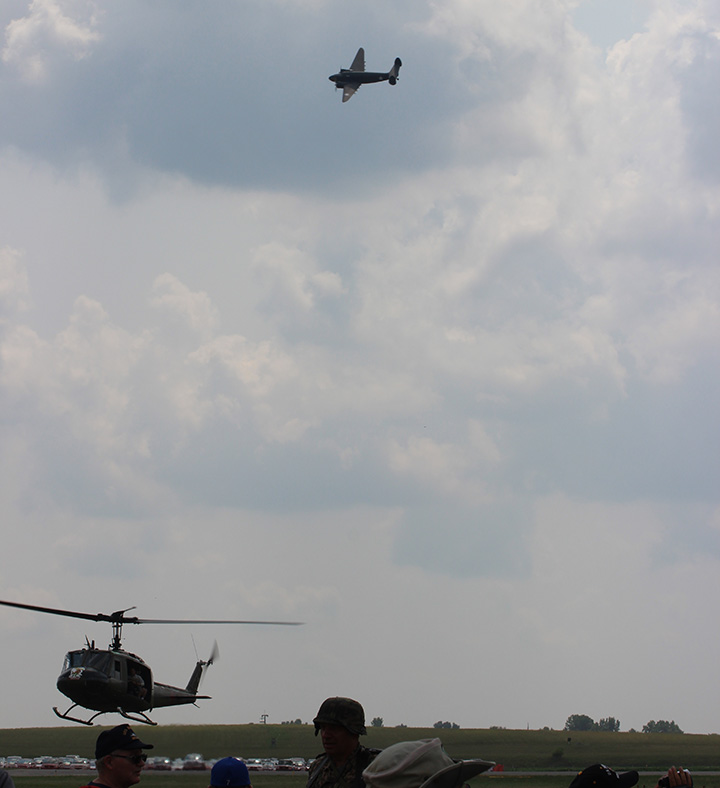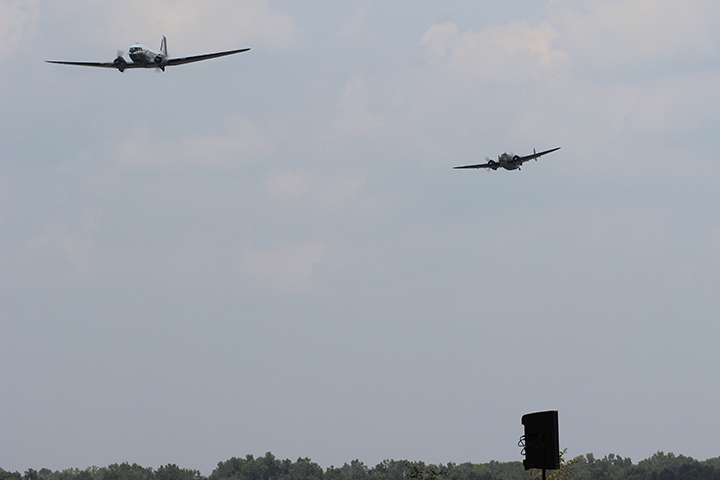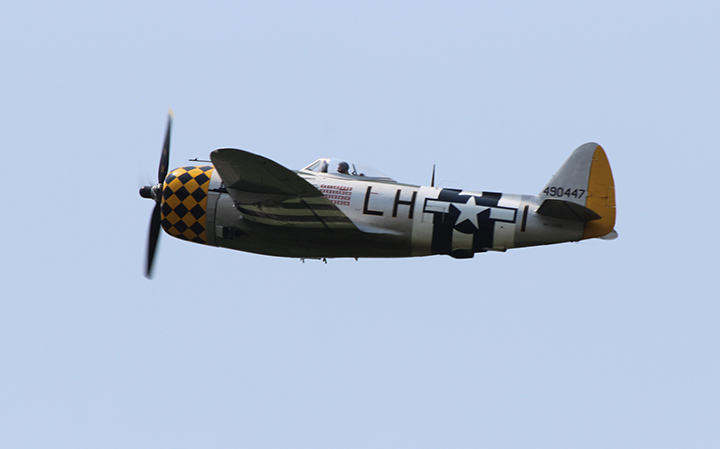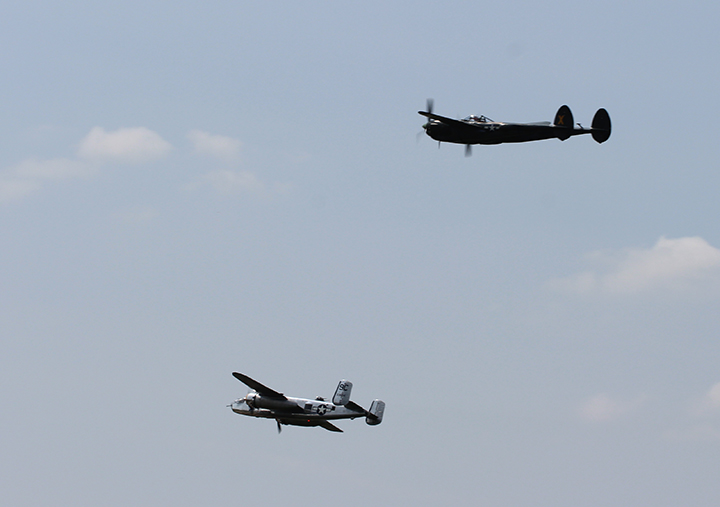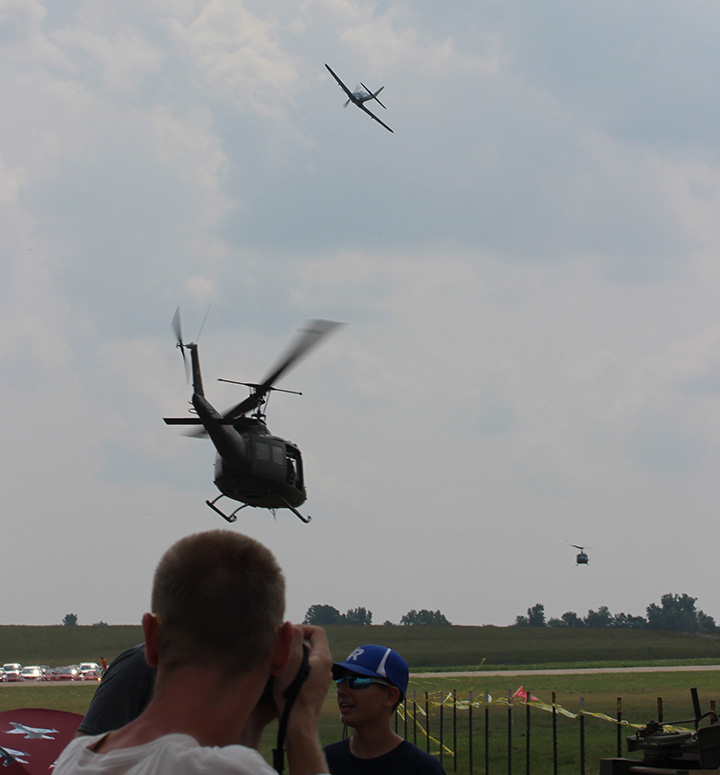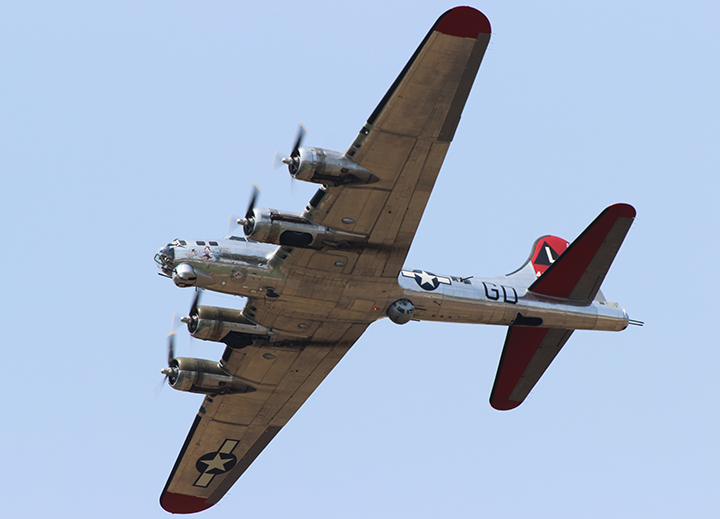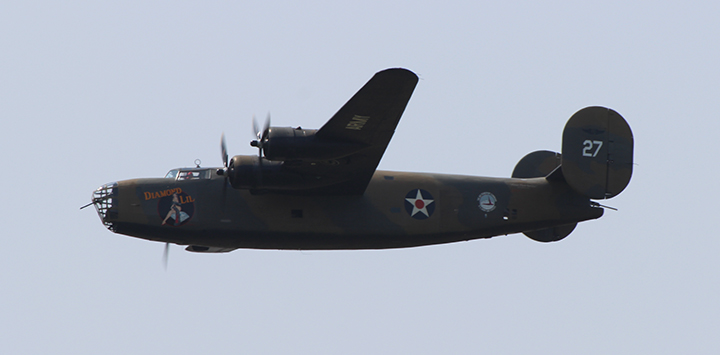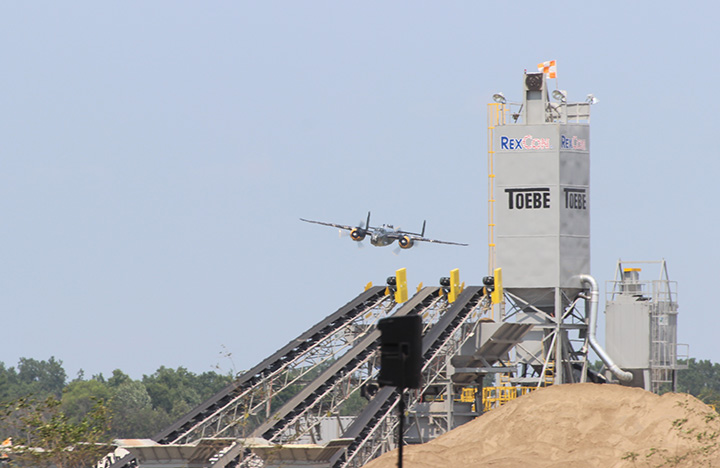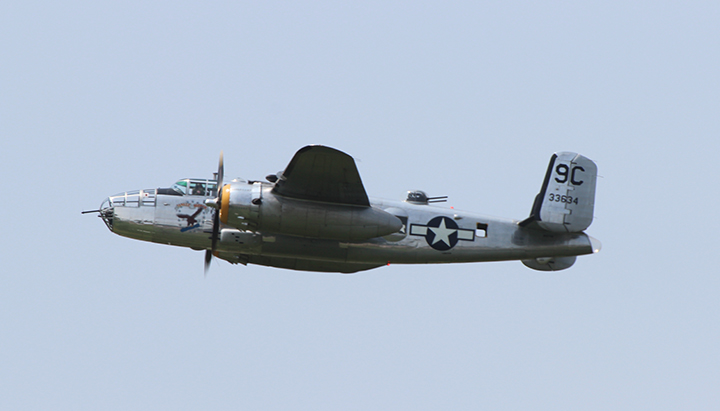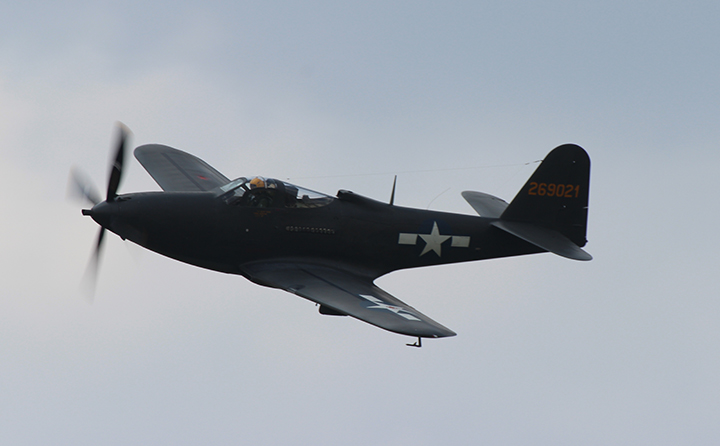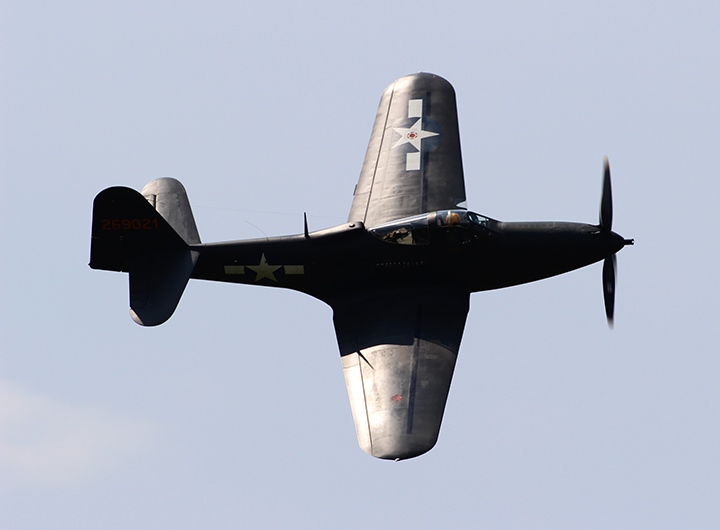|
2014 Airshows This year I attended Thunder Over Michigan for both days, Saturday with my son and son-in-law, and then on Sunday by myself. As much as there was at the show to see in 2014, and the fact that the weather was perfect for the event, it was well worth the long drive back up and home again in the evening each day. After returning home on Sunday, I realized the distance I traveled the two days to the show if put into one trip would have taken me to Jacksonville, FL. As with all Thunder over Michigan shows, there were a considerable amount of warbirds both flying and on static display. Saturday I did not really have the opportunity to spend the time I wanted looking at the static aircraft and other displays because the first of two daily WWII battles started at 10:30 each morning. Saturday I watched the morning battle and Sunday I spent the time looking at aircraft and military displays instead. One significant event for the Yankee Air Museum in 2014 that produces the airshow of long range historical significance was the purchase of a portion of the former Ford B-24 bomber plant for the location of its museum. This has been an endeavor the organization has been working on for several years once it became known the vacant plant was going to be razed for re-development. The "Bomber Plant" as it is known to the locals, was actually one of literally thousands of new plants and plant additions the US Government loaned the money for to produce war goods during WWII. This happened for several reasons. First, the US with the rest of the world was just coming out of the Great Depression in 1940 when it was realized that construction of new facilities would be needed to prepare for the threat of war. Also, businesses were not willing take on a loan for buildings and equipment that it would only need for the duration of the war and would not be needed by the company afterwards. And even if the company did want to take out the loan, the banks would not loan the money, for the same reasons. So the US Government loaned Ford and other companies in the country the funds to construct the needed buildings and procure the needed tooling and equipment. It was the taxpayer and the workers buying savings bonds and the children in schools buying stamps that became saving bonds that financed the winning of the war. Then at the end of WWII, the buildings became the property War Assets Administration, which then sold the buildings and equipment. Many companies chose to purchase the buildings they has used during the war for post war civilian production. Ford did not purchase the Willow Run Bomber Plant after WWII although it did purchase the plant at the River Rouge Complex that built R-2800 aircraft engines. In 1947 the Kaiser-Frazer Corporation purchased the used plant for automotive production and then during Korea built also C-119s in the facility. This lasted until 1953 when Kaiser-Frazer moved out. Then General Motors moved in and made automatic transmissions in the plant until 2010. Over 70 years old and too large for today's manufacturing businesses, the building was scheduled to be torn down. The Yankee Air Museum after a several year fund raising campaign in 2014 acquired enough funds to secure a portion of the historic plant for its museum.
During the show there was considerable time to spent by the announcing team talking about the importance of the Bomber Plant during WWII. This was all well and good but my recent research into the US auto industry in WWII has found that while the Willow Run Bomber Plant was important, its significance has over shadowed not only many other important war products produced by Ford, but the other eleven US auto companies that were also producing material for final victory. Many of those products were at the show and many of them were built in the local Detroit area.
Willow Run is 30 miles from downtown Detroit and was nothing but farmland 70 years ago and produced only a small percentage of the automotive industry's total war output. Lest one think that the only military product that Chrysler manufactured during WWII was Dodge trucks, the company produced a diverse product line including R-3350 engines for the B-29 program and 1,000 railcars of nickel plated steel tubing for the separation of U235 from U238 for the Manhattan Project. Without the tubing the Manhattan Project would not have produced the needed U-235 needed for Fat Man and the feeder uranium needed for the plutonium bombs.
Six of the hydraulic cylinders that opened and closed the gear doors, and raised and lowered the landing gears on the Texans were built by the Frigidaire Division of GM in Dayton, OH. Frigidaire had four plants in Dayton producing products for the military during WWII, two of them built specifically for the war effort. General Motors, the largest military contractor in the US during WWII, had 38 Divisions with over 100 plants turning out much needed war material and was the largest military contractor during WWII.
Aviation enthusiasts are well aware that the Allison Division of GM provided the V-1710 engines for the Lockheed Lightning, but are unaware that Oldsmobile provided 20mm cannons for the aircraft and the Harrison Radiator Division of GM supplied radiators ,oil coolers and intercoolers. Three GM divisions, AC Sparkplug in Flint, MI, Brown-Lipe-Chapin in Syracuse, NY and Frigidaire all produced the aviation version of the .50 M2 machine gun, which would have been used not only on the P-38, but every other warplane used by the US in WWII. Cadillac supplied 175 parts for the Allison engine while the Delco-Remy Division of GM furnished all of the major castings.
Eastern aircraft was a Division of General Motors that was created specifically from five of its east coast plants to produce not only the TBM torpedo bomber but the FM-1 and FM-2 Wildcat fighters. If the war had continued, planning was in place for Eastern to produce the F8F Bearcat as the FM-3. The Division was dissolved at the end of the war and the plants returned to building autos and trucks. Pontiac Motor Division of GM in Pontiac built aerial torpedoes that the TBM would have carried, and car manufacturer Graham-Paige in Detroit machined components for the torpedoes.
Both Ford and Chevrolet supplied the R-2800 engine for the P-47, while the Harrison Radiator Division of GM provided intercoolers for the aircraft during WWII. Frigidaire Division of GM provided the big four bladed props.
Most warbird enthusiasts are well aware that the Mustang became the fighter it was when powered by the Packard built Rolls-Royce V-1650 Merlin engines, built on East Grand Boulevard in downtown Detroit. But they may not be aware that Buick cast the cylinder blocks or that Graham-Paige machined parts for the engine. They may also not be aware that Henry Ford was originally approached to build the engine and refused, as he did not want to work with a foreign company and country. But Ford did go on to build 57,851 R-2800 engines at the River Rouge, which was several thousand more engines than Packard built of the Merlins. Chrysler also refused the work but that was because it did not want to commit the engineering resources to converting British drawings and specifications to American ones.
Buick was the primary source for Pratt & Whitney R-1830 engines for the B-24 program during WWII, along with Chevrolet that also supplied the engine. The Delco-Products Division of GM supplied the landing gear assemblies for the B-24s and both Frigidaire Division of GM and Nash-Kelvinator manufactured the three bladed propellers. The Nash-Kelvinator plant was in Lansing, MI, not far from where I grew up. My Grandfather was a foreman in the plant in charge of balancing the blades.
When the Fairfax plant opened up the Fisher Body Davison of GM supplied 55% of the content that went into the B-25s built there which included wings, fuselages, tail assemblies, exhaust collectors along with forgings, castings and machined parts. Fisher Body supplied Fairfax from its opening in 1941 through June of 1945. Ten Fisher Body plants were involved in this endeavor. One of the Fisher Body plants was also in Lansing, MI, where my mother worked during the war.
The Cadillac Division of GM in Detroit, MI was one of the producers of of M5 Stuart tanks. Each M5 had two Cadillac V-8 engines paired with Hydra-Matic transmissions built by the Detroit Transmission Division. After Kaiser Frazer moved out of the Willow Run Bomber plant across the field, the Hydra-Matic Division, which was the renamed Detroit Transmission Division from WWII, moved into the Bomber plant and stayed for over 55 years, producing millions of transmissions in the facility.
In the quotation below from Dwight D Eisenhower's book, Crusade in Europe, the General speaks of of the importance of the 2-1/2 ton truck. "Incidentally, four other pieces of equipment that most senior officers came to regarded as among the most vital to our success in Africa and Europe were the bulldozer, the jeep, the 2-1/2 ton truck, and the C-47. Curiously enough, none of these is designed for combat." In a previous portion of the book, General Eisenhower spent a page explaining how the emergency shipment of 5,400 2-1/2 ton trucks to the battle front in North Africa was vitally important to winning that campaign.
Six auto companies built trucks for the war effort from 1940 to 1945: Chevrolet, Dodge, Ford, GMC, Studebaker, and Willys-Overland built 2,258,854 trucks ranging in capacity from the 1/4 Jeep to 3 tons. True Motor City!!
And yes, in 2014 Thunder did have the USAF Thunderbirds, which I did not stay to see either day, but from all reports was pretty much a non event due to lack of enthusiasm in the Thunderbird's flying and the fact the show was so far away from the crowd. When all is said and done, a US military jet team costs a show $50,000 plus. For what the organizers and spectators got out of that added cost, the money could have been better spent on warbirds. Or used for the purchase of the B-24 plant across the field.
Chevrolet Division of GM built R-1830s for the C-47 and C-53. Frigidaire Division built propellers for the aircraft.
Allison, Buick, Chevrolet, Chrysler, Ford, Nash-Kelvinator, Packard and Studebaker produced 352,259 aircraft engines during the war. Maybe that's why Detroit is properly called Motor City.
After the P-63 demonstration I left on both days. On Sunday, I stopped at an automotive museum in Ypsilanti to the west of the airport. Walking to my vehicle after the visit, the Thunderbirds flew over downtown Ypsilanti several times as they were setting up for their next pass at the show. From what I have heard, I may have had a better view of the Thunderbirds than those at the show. Hopefully Thunder 2015 will have a warbird and Blue Angel show that is more spectator friendly than was 2014. For more information on the US Automobile Industry's contribution to victory in WWI, please visit: US Auto Industry in WWII
Titusville (Tico), FL
Spirit of St. Louis, MO
Youngstown Air Reserve
Station, OH
Central
Indiana Warbird Event Trilogy
Evansville Normandy Re-Enactment, IN
Dayton Airshow, OH
Thunder over Michigan, Belleville,
MI
Warsaw, IN
Richmond, IN
WWI Dawn Patrol
Rendezvous, Dayton, OH |

